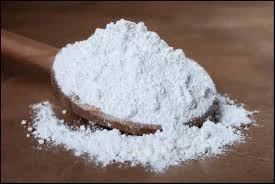
urea fertilizer
Understanding Urea Fertilizer Benefits, Usage, and Environmental Impact
Urea fertilizer, one of the most widely used nitrogen fertilizers in agriculture, plays a crucial role in enhancing crop yields and improving soil fertility. Composed of 46% nitrogen by weight, urea is a synthetic organic compound that provides a concentrated source of nitrogen, an essential nutrient for plant growth.
The primary benefit of urea fertilizer lies in its high nitrogen content, which is vital for various physiological processes in plants. Nitrogen is a key component of amino acids, the building blocks of proteins, and is also integral to chlorophyll production, which is essential for photosynthesis. By applying urea, farmers can significantly increase the productivity of their crops, leading to higher yields and improved food security.
Urea is versatile and can be used in various ways. It can be applied as a granule or in solution form and is suitable for broadcasting, banding, or side-dressing during the growing season. One of its significant advantages is that it can be applied to a wide range of crops, including grains, fruits, and vegetables. Moreover, urea is cost-effective, making it accessible to farmers at all levels.
urea fertilizer

However, the use of urea fertilizer is not without its challenges
. One concern is its potential to lead to environmental issues, particularly when used excessively. When urea is applied to the soil, it undergoes a process called hydrolysis, converting into ammonium carbonate, which then can be further converted to ammonia. This ammonia can volatilize into the atmosphere under certain conditions, leading to the loss of nitrogen from the soil and contributing to air pollution.Additionally, when urea is washed away by rain or irrigation, it can lead to nutrient runoff into nearby water bodies. This runoff can cause eutrophication, leading to algal blooms that deplete oxygen in the water, harming aquatic life. Therefore, it's crucial for farmers to apply urea fertilizers at optimal rates and timings to minimize these environmental impacts.
To mitigate the challenges associated with urea fertilizer, farmers are increasingly adopting best management practices. These include precision application techniques that consider soil and crop needs, using coated urea products that reduce nitrogen loss, and employing split application methods to synchronize nutrient availability with plant uptake.
In conclusion, urea fertilizer remains a critical tool in modern agriculture, providing essential nitrogen to crops and enhancing food production worldwide. While its benefits are substantial, careful management and application are vital to minimizing environmental risks. As the global demand for food continues to rise, finding a balance between maximizing agricultural productivity and protecting the environment will be essential. Sustainable practices in the use of urea fertilizer can help achieve this balance, ensuring food security for future generations.
-
nitrile-rubber-honoring-strict-production-standardsNewsAug.22,2025
-
aspartame-ingredients-honoring-food-safety-valuesNewsAug.22,2025
-
fertilizer-for-balanced-plant-nutritionNewsAug.22,2025
-
cyanide-gold-processing-with-high-purity-additivesNewsAug.22,2025
-
formic-acid-in-textile-dyeing-applicationsNewsAug.22,2025
-
aluminum-hydroxide-gel-in-skincare-productsNewsAug.22,2025
-
Regulatory Compliance for Global Mining Chemicals UseNewsAug.12,2025
Hebei Tenger Chemical Technology Co., Ltd. focuses on the chemical industry and is committed to the export service of chemical raw materials.
-

view more DiethanolisopropanolamineIn the ever-growing field of chemical solutions, diethanolisopropanolamine (DEIPA) stands out as a versatile and important compound. Due to its unique chemical structure and properties, DEIPA is of interest to various industries including construction, personal care, and agriculture. -

view more TriisopropanolamineTriisopropanolamine (TIPA) alkanol amine substance, is a kind of alcohol amine compound with amino and alcohol hydroxyl, and because of its molecules contains both amino and hydroxyl. -

view more Tetramethyl Thiuram DisulfideTetramethyl thiuram disulfide, also known as TMTD, is a white to light-yellow powder with a distinct sulfur-like odor. It is soluble in organic solvents such as benzene, acetone, and ethyl acetate, making it highly versatile for use in different formulations. TMTD is known for its excellent vulcanization acceleration properties, which makes it a key ingredient in the production of rubber products. Additionally, it acts as an effective fungicide and bactericide, making it valuable in agricultural applications. Its high purity and stability ensure consistent performance, making it a preferred choice for manufacturers across various industries.





